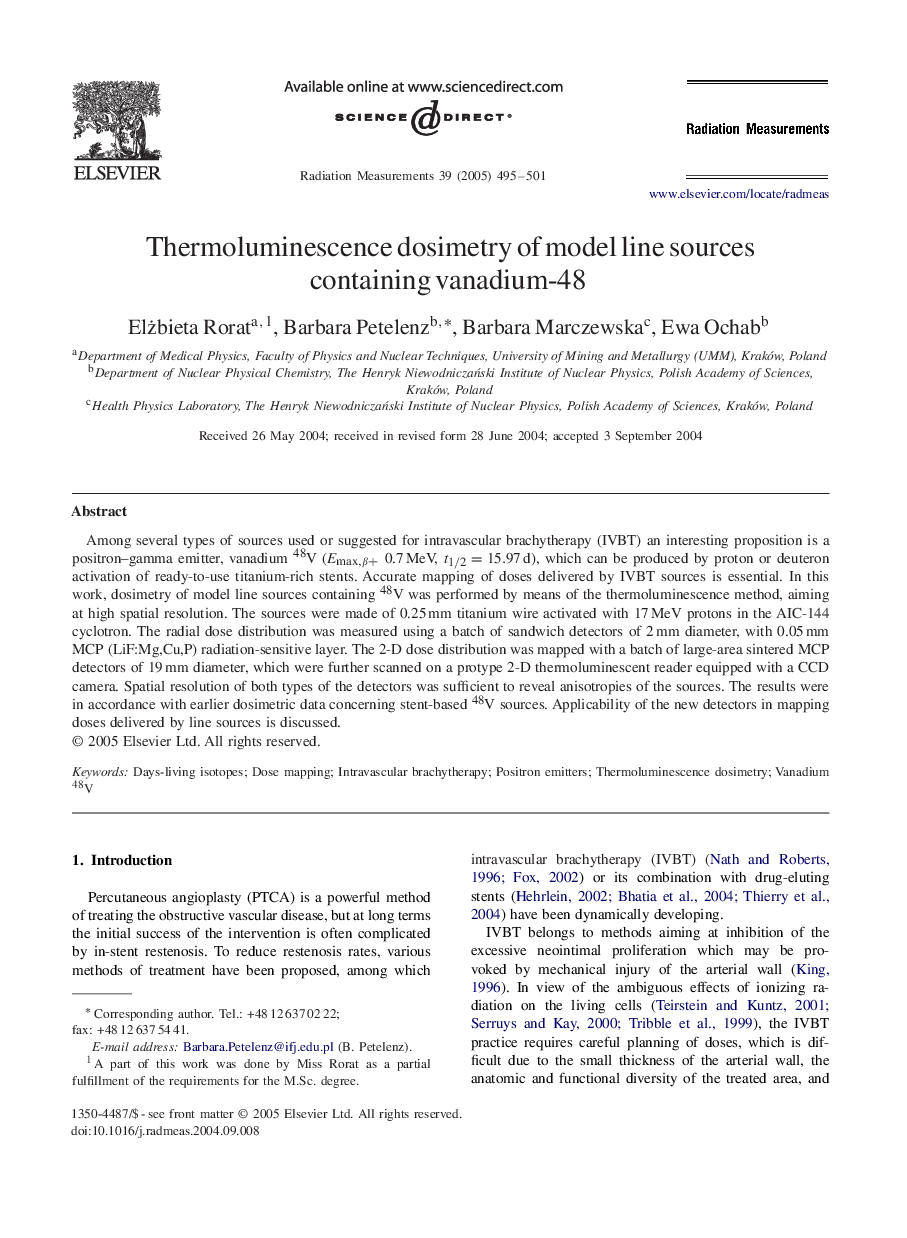| Article ID | Journal | Published Year | Pages | File Type |
|---|---|---|---|---|
| 10731191 | Radiation Measurements | 2005 | 7 Pages |
Abstract
Among several types of sources used or suggested for intravascular brachytherapy (IVBT) an interesting proposition is a positron-gamma emitter, vanadium 48V (Emax,β+ 0.7 MeV, t1/2=15.97 d), which can be produced by proton or deuteron activation of ready-to-use titanium-rich stents. Accurate mapping of doses delivered by IVBT sources is essential. In this work, dosimetry of model line sources containing 48V was performed by means of the thermoluminescence method, aiming at high spatial resolution. The sources were made of 0.25 mm titanium wire activated with 17 MeV protons in the AIC-144 cyclotron. The radial dose distribution was measured using a batch of sandwich detectors of 2 mm diameter, with 0.05 mm MCP (LiF:Mg,Cu,P) radiation-sensitive layer. The 2-D dose distribution was mapped with a batch of large-area sintered MCP detectors of 19 mm diameter, which were further scanned on a protype 2-D thermoluminescent reader equipped with a CCD camera. Spatial resolution of both types of the detectors was sufficient to reveal anisotropies of the sources. The results were in accordance with earlier dosimetric data concerning stent-based 48V sources. Applicability of the new detectors in mapping doses delivered by line sources is discussed.
Related Topics
Physical Sciences and Engineering
Physics and Astronomy
Radiation
Authors
Elżbieta Rorat, Barbara Petelenz, Barbara Marczewska, Ewa Ochab,
